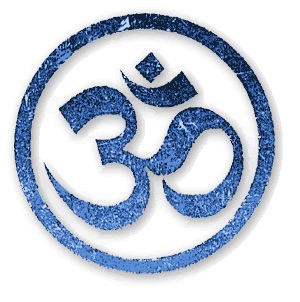Yoga’s popularity is at an all time high. It is right up there with the popularity of mindfulness meditation which has influenced psychology and medicine as its benefits become scientifically proven and the practice gains respect in healthcare. But both of these practices have ancient roots which are seldom understood by yoga teachers and mindfulness meditation teachers alike. Understanding a little bit about the history of these powerful spiritual tools will help us get more out of our practice and it will increase our focus and intention by clarifying our goal.
Meet Yoga
Yoga is an often used and little understood term these days that describes a multiplicity of physical exercises that has little to no relationship with authentic yoga. By ‘authentic’ I simply mean as it has been understood and practiced in its land of origin for thousands of years before becoming popular in the West.
Now before you toss me into the hater’s pile let me explain why this is such an important issue. If you are currently practicing yoga or you are meditating there is a very good chance that you are being robbed of the most important benefits of both practices. If you take the time to learn yoga or meditation and you diligently practice on a regular basis don’t you think you should get all the rewards of practice? Personally I think it’s a shame that people put in the time, money, and effort and walk away with only half of the prize.
The word “yoga” means union, and in this sense union refers to an inner experience of unity with one’s self, others, and the universe. This simple precious and extremely rare experience is the only true goal of yoga and meditation. Everything else from increasing grey matter in the brain to lowering blood pressure is secondary.
Granted they are valuable benefits and they are worthy goals within themselves but they all come about by increasing our awareness of the experience of unity that exists at our core of being. On the other hand if you were able to increase your grey matter, lower your blood pressure, and individually produce all of the physical benefits of a yoga and meditation practice, you would not experience the unity of yoga.
In layman’s terms the experience of yoga, the experience of unity, is known as being stress free. Stress is primarily a psychological event that is created by our brain’s ability to divide our world into opposites. We perceive everything in dualistic terms: good/bad, right/left, hot/cold, us/them, safe/danger, etc.
Although this brain gift of ours gives our species unique advantages, living in a world of opposites inevitably produces endless stress, confusion, and misunderstanding in the forms of conflict, comparing things that are incomparable such as ourselves with others, worrying our future will not meet our hopes, fear in all shapes and sizes, and much more. Only the experience of unity unties all our psychological knots, dissolves our conflicts, and puts us at ease.
In other words the experience of yoga is far more valuable and different from relaxation which by definition is a temporary return to our balanced baseline. The experience of yoga in time becomes permanent through repetition in our practice. An accomplished yogi never loses his or her experience of unity even when facing death much less while navigating every day stressors. This accomplishment and nothing less is the true goal of yoga and only a teacher who has accomplished the goal can lead you to the goal yourself. Being able to execute a series of stretching postures and being able to direct others through those same exercises does not make one a yoga teacher.
According to the ancient yogic texts of India, yoga can be practiced in a number of ways which do not include yoga postures. There is devotional yoga, knowledge yoga, work related yoga, meditation yoga (more about this in a minute), sound yoga, and many other forms of yoga but they all have one goal in common — the permanent experience of unity.
So please, for your own benefit, understand the true purpose of yoga so you can make sure your practice blossoms into the experience of yoga, which will last you much longer than any yoga outfit in the world.
Namaste
Meet Meditation
If you tell someone you started meditating they will most likely assume you mean mindfulness meditation. If you ask him or her what mindfulness meditation is, they will probably describe guided meditation, calming techniques, or hypnotherapy because all of these helpful techniques are currently being taught as mindfulness meditation but none of them are mindfulness meditation.
Originally mindfulness meditation was a prescription to the world from Buddha who considered himself more a physician than a deity. He stated that his sole mission was to end suffering and dissatisfaction which was his life’s preoccupation. How does mindfulness meditation end suffering and dissatisfaction? According to Buddha mindfulness meditation ends suffering and dissatisfaction through three interrelated insights which are as follows:
- The insight that everything is impermanent as witnessed by our bodies, senses, and minds. Every thought, emotion, physical sensation, and everything coming into our senses is transitory as are our dreams and dreamless sleep states.
- The insight that there is no permanent fixed self. Our notion of being a specific person with a unique storyline is not really a singular entity as we typically experience ourselves but a composite of conditions and situations which are all transitory. This is understandable only after we learn that everything is impermanent through our own experience.
- The insight that results in Nirvana. When we fully understand our first two insights — everything is impermanent and there is no fixed permanent self — suffering and dissatisfaction ends. Suffering and dissatisfaction are caused by our grasping onto and trying to maintain the false notion of a permanent self and maintain conditions to preserve its safety, pleasure, and permanency.
When you are considering learning a mindfulness meditation technique or if you are currently practicing one ask yourself if it is capable of teaching you the three above insights. If it is capable then it is a true mindfulness technique. If it is not capable it is something other than mindfulness meditation.
Despite all the brand names, styles, and types of meditation being taught these days they all break down to two simple categories: directive and nondirective. Directive Meditation is any technique that requires you to concentrate on one object. The object can be your breath, a thought, word, sound, body part, or just about anything else.
Most yogic meditation techniques are directive meditation and their goal is to still the thought waves of the mind. Although it is important to remember these yogic methods of meditation were practiced thousands of years ago by people who practiced yoga almost every waking hour and did little else. Everything about their lives: diet, behavior, routine, sex life, sleeping habits, everything, was ritualized and disciplined. Stilling the mind of all activity, even if it is proven to be beneficial, is no small task and we must remember it is also temporary. As soon as a meditator loosens his concentration the mind will immediately become active again.
Most mindfulness meditation methods in the West are based around concentration on the breath and so they are also in the category of directive meditation. Although they do not share the goal of stilling the mind with yoga practices — typically mindfulness meditation instructions instruct one to simply concentrate on the feeling of the breath and return one’s attention back to the breath whenever one finds oneself distracted — one must ask the question, “How does returning my attention back to my breath over and over again result in the three mindfulness insights we discussed earlier in this blog?”
The answer is it doesn’t. The practice of returning our attention back to our breath is a preliminary practice of mindfulness meditation whose purpose is to strengthen concentration so we can move on to other meditation practices that do reveal the three mindfulness meditation insights.
This brings us to nondirective meditation which is a completely different practice from directive meditation. In nondirective meditation we use an object such as the breath or a specific thought to ground our awareness in the here and now. We allow the mind to think. We allow the mind to feel emotions. We allow everything coming in from our five senses to be in our awareness, but because we ground our moment by moment experience, we become acutely aware that everything in our field of experience is coming and going. It is all passing.
This subtle but continuous experience of everything coming and going, reveals the nature of mind which can best be described as twofold: all of the phenomenon coming and going and the underlying more fundamental level of our mind which is constant and which through all transitory objects of perception are perceived. In our LSF Meditation Map we call everything in our awareness that comes and goes Active Mind and we call the constant awareness Observing Awareness.
It is easy to see that nondirective meditation does lead to the three mindfulness insights. Through its practice we recognize that everything in our field of experience is impermanent. We recognize that our experience of self is in constant flux and is therefore impermanent. We recognize through our experience of Observing Awareness that it is completely non-dual — there is no self and other, etc., in our most fundamental awareness.
The reason why nondirective meditation results in mindfulness meditation and concentration techniques do not is simple. All concentration techniques require engaging the mind. Concentration is an act of will. When we are actively engaging our mind we cannot possibly discover its nature. Only when we allow the mind to be, when we allow the mind to do what it naturally does, is it possible to observe its nature and the easiest way to do that is to use a simple attention technique like our LSF Meditation technique that grounds our experience in the here and now.
Tying it All Together
The goals of yoga and meditation are fundamentally the same. The experience of yoga and the experience of Observing Awareness – our fundamental awareness — are the same experience. The differences between these two enlightening experiences exists more in how they are described by two different meditation traditions — Yogic and Buddhist – but not in the experiences themselves. Yoga and meditation are two of the most important and most helpful practices that anyone can learn but please make sure you are getting the real deal and experience yourself and life in a way that is unimaginable to most people.

